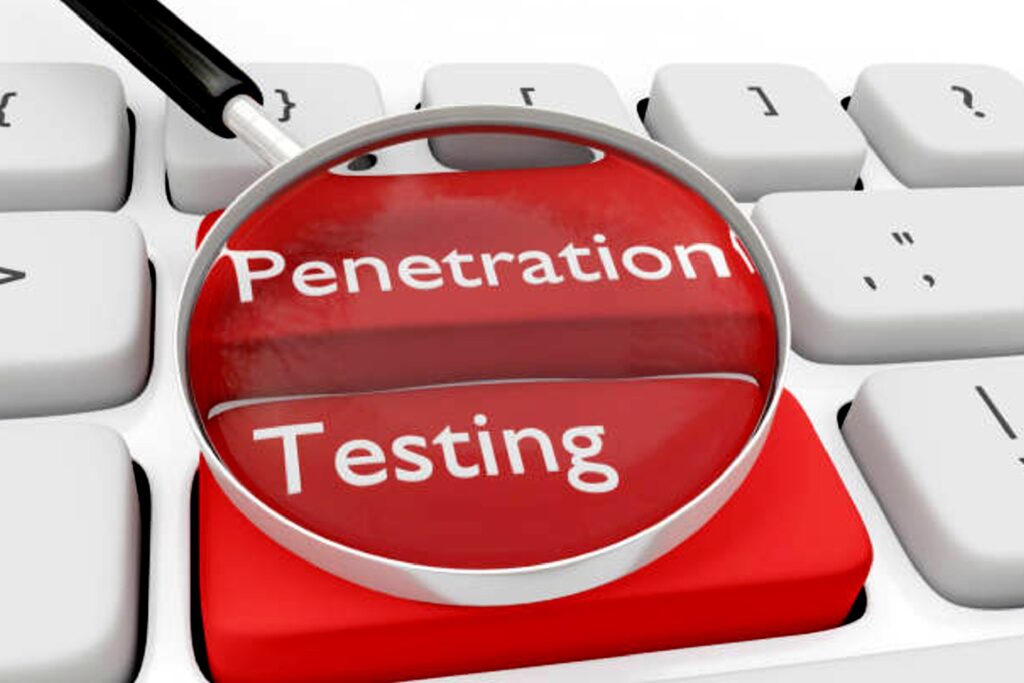Cyber security is a big thing in today’s business. With this new emergence also came along the cloud computing and storage. However, cloud security has become an increasingly concern for businesses because of bad actors.
Regardless of sizes, more and more companies are relying on cloud-based infrastructure and services to support their operations. One effective way to ensure your cloud security is through emergent testing.
It requires continuously testing and monitoring of your systems to identify and address potential vulnerabilities.
Emergent testing can take many forms. This include penetration testing, security assessments, and ongoing monitoring of your systems and networks.
Why Emergent Testing?
Regular security testing is always a good thing for your network. When you perform these tests, you can easily identify and fix potential vulnerabilities. It helps to address your weaknesses before they can be exploited by cybercriminals.
One of the key benefits of emergent testing is that it helps you stay ahead of potential threats. You can only do one or two tests a year with traditional testing methods leaving significant gaps in your defenses. But with continuous testing, you can keep on top of your vulnerabilities and take constructive action.
Another advantage of emergent testing is that it helps you to improve your overall security posture. It helps to continuously testing and monitoring your systems. Doing so exposes your defenses, weaknesses so that you could take steps to strengthen them. In addition, this can help you build a more secured and resilient cloud environment. Thus, reducing the risk of data breaches and other security incidents.
Here are a list of emergent testing benefits:
- Continuous testing of security controls
- Early identification of security vulnerabilities
- Reduced risk of data breaches
- Improved compliance with industry regulations
- Enhanced protection of sensitive data
- Improved incident response capabilities
- Increased efficiency of security operations
- Enhanced collaboration among teams
- Greater flexibility in security testing
- Increased cost savings through automation
Continuous testing of security controls
Continuous testing of security controls is a critical part of any organization’s security strategy, because it helps ensure that these controls are effective and up-to-date. Through regular testing on security controls, organizations can identify weaknesses or vulnerabilities. Therefore taking steps to address them, to reduce the risk of a security incident.
One of the most effective ways to conduct continuous testing of security controls is through the use of penetration testing. This involves simulating an attack on your systems. Doing this in controlled manner helps to identify vulnerabilities that an attacker may exploited.
Another key strategy for continuous security controls testing is the use of security information and event management (SIEM) platforms. These platforms can help you detect and respond to potential threats. It identifies and address vulnerabilities in real-time.
Leveraging these tools, is an advantage that can give you a better understanding of your security posture. Then you could take steps to address every issue identified.
In addition to penetration testing and SIEM platforms, organizations can also improve their ability to test security controls through the use of security automation and orchestration tools. These tools can help automate many security-related tasks and processes, which can save time and resources and allow security teams to focus on more critical tasks.
In summary, continuous testing of security controls is a critical aspect of any organization’s security strategy. By conducting regular penetration testing, leveraging SIEM platforms, and using security automation and orchestration tools, organizations can identify vulnerabilities and take steps to address them, which can help reduce the risk of a security incident.
Early identification of security vulnerabilities
Identifying security vulnerabilities early is a crucial aspect of any organization’s security strategy, as it allows organizations to address potential issues before they become a problem. By identifying vulnerabilities early, organizations can take steps to mitigate the risk of a security incident and protect their sensitive data and assets.
One of the most effective ways to identify security vulnerabilities early is through the use of security assessments and audits. These assessments involve evaluating an organization’s security posture and identifying potential vulnerabilities and risks. By conducting regular assessments, organizations can stay up-to-date on their security posture and identify issues that need to be addressed.
Another key strategy for early identification of security vulnerabilities is through the use of advanced security technologies, such as intrusion detection and prevention systems, vulnerability management systems, and security information and event management (SIEM) platforms. These technologies can help organizations detect and respond to potential threats, as well as identify and address vulnerabilities in real-time. By leveraging these tools, organizations can gain a better understanding of their security posture and take steps to address any issues that are identified.
In addition to security assessments and advanced security technologies, organizations can also improve their ability to identify security vulnerabilities through employee training and awareness. It is important for all employees to be aware of potential threats and vulnerabilities, and to understand their role in protecting the organization’s sensitive data and assets. By providing training and resources, organizations can ensure that their employees are aware of the importance of security and are able to identify potential vulnerabilities.
In summary, early identification of security vulnerabilities is a critical aspect of any organization’s security strategy. By conducting regular assessments, leveraging advanced security technologies, and providing employee training and resources, organizations can identify potential vulnerabilities and take steps to address them before they become a problem.
Emergent testing can Reduce risk of data breaches
Data breaches are a serious concern for any organization, as they can result in the unauthorized access or disclosure of sensitive information, leading to financial losses, reputational damage, and legal action. As a result, it is important for organizations to take steps to reduce the risk of data breaches and protect their sensitive data from potential threats.
One of the most effective ways to reduce the risk of data breaches is through the implementation of strong security controls. This can include measures such as encryption, access controls, and advanced security technologies, such as firewalls and intrusion detection and prevention systems. By implementing these controls, organizations can prevent unauthorized access to their sensitive data and reduce the risk of a data breach.
Another key strategy for reducing the risk of data breaches is through the development and implementation of a comprehensive security plan. This should involve the identification of potential threats and vulnerabilities, the development of policies and procedures to address these issues, and the establishment of processes for monitoring and responding to security incidents. By having a clear and well-defined security plan in place, organizations can better protect their sensitive data and reduce the risk of a data breach.
In addition to security controls and a comprehensive security plan, organizations can also reduce the risk of data breaches through the use of technology. Advanced tools and systems, such as security information and event management (SIEM) platforms, can help organizations detect and respond to potential threats, as well as identify and address vulnerabilities before they become a problem. By leveraging these tools, organizations can gain a better understanding of their security posture and take steps to reduce the risk of a data breach.
In summary, reducing the risk of data breaches is a critical aspect of any organization’s security strategy. By implementing strong security controls, developing a comprehensive security plan, and leveraging advanced technology, organizations can better protect their sensitive data and reduce the risk of a data breach.
Improved compliance with industry regulations
Compliance with industry regulations is a critical aspect of any organization’s operations, as it ensures that the organization is following the legal and ethical standards that have been set forth by regulatory bodies. Non-compliance can result in serious consequences, including fines, legal action, and damage to an organization’s reputation. As a result, it is important for organizations to take steps to improve their compliance with industry regulations.
One of the most effective ways to improve compliance with industry regulations is through the development and implementation of a comprehensive compliance program. This should involve the identification of all relevant regulations and standards, the development of policies and procedures to ensure compliance, and the establishment of processes for monitoring and reporting on compliance. By having a clear and well-defined compliance program in place, organizations can reduce the risk of non-compliance and ensure that they are meeting all of the necessary requirements.
In addition to a comprehensive compliance program, organizations can also improve their compliance with industry regulations through the use of technology. Advanced tools and systems, such as governance, risk, and compliance (GRC) platforms, can help organizations manage and track their compliance efforts, identify potential issues, and generate reports for regulatory bodies. By leveraging these tools, organizations can improve their compliance posture and reduce the risk of non-compliance.
Another key strategy for improving compliance with industry regulations is through training and awareness. It is important for all employees to understand their role in the compliance process and to be familiar with the policies and procedures that are in place. By providing training and resources, organizations can ensure that their employees are aware of their obligations and are able to comply with industry regulations.
In summary, improving compliance with industry regulations is a critical aspect of any organization’s operations. By developing a comprehensive compliance program, leveraging technology, and providing training and resources to employees, organizations can reduce the risk of non-compliance and ensure that they are meeting all of the necessary requirements.
Enhanced protection of sensitive data
Sensitive data is a valuable asset for any organization, as it can contain valuable information about customers, employees, and business operations. However, it is also a prime target for cyber criminals, who may seek to access or steal this data for their own purposes. As a result, it is important for organizations to take steps to enhance the protection of sensitive data in order to safeguard it against potential threats.
One of the most effective ways to enhance the protection of sensitive data is through the use of encryption. Encrypting data makes it unreadable to unauthorized parties, and it is an important tool for protecting sensitive information, such as financial and personal data. By implementing strong encryption protocols, organizations can ensure that their sensitive data is secure, even if it is accessed by an unauthorized party.
Another key strategy for enhancing the protection of sensitive data is through the use of access controls. This involves implementing measures to ensure that only authorized individuals can access sensitive data, and limiting the types of actions that can be taken with this data. For example, an organization might grant access to sensitive data only to employees who have a specific need for it, and only allow them to view or edit the data, rather than download or copy it.
In addition to encryption and access controls, organizations can also enhance the protection of sensitive data through the use of advanced security technologies, such as firewalls, intrusion detection and prevention systems, and data loss prevention (DLP) systems. These technologies can help organizations detect and prevent threats, such as malware and cyber attacks, and ensure that their sensitive data remains secure.
In summary, enhancing the protection of sensitive data is a critical aspect of any organization’s security strategy. By implementing strong encryption protocols, access controls, and advanced security technologies, organizations can safeguard their sensitive data against potential threats and ensure that it remains secure.
Improved incident response capabilities
Incident response is a critical component of any organization’s security strategy, as it involves taking steps to mitigate the impact of a security incident and restore normal operations as quickly as possible. However, in order to be effective, incident response capabilities must be well-planned and well-executed. Fortunately, there are several strategies that organizations can use to improve their incident response capabilities and better protect against security threats.
One of the most effective ways to improve incident response capabilities is through the development of a comprehensive incident response plan. This should outline the steps that an organization will take in the event of a security incident, including the roles and responsibilities of various teams, the processes for communication and collaboration, and the tools and resources that will be used. By having a clear and well-defined plan in place, organizations can respond to incidents more effectively and minimize their impact.
Another key strategy for improving incident response capabilities is through training and awareness. It is important for all employees to understand their role in the incident response process and to be familiar with the procedures that need to be followed. By providing training and resources, organizations can ensure that their employees are prepared to respond to incidents and minimize their impact.
In addition to a comprehensive incident response plan and training, organizations can also improve their incident response capabilities through the use of technology. Advanced tools and systems, such as security information and event management (SIEM) platforms, can help organizations detect and respond to incidents more quickly and effectively. By leveraging these tools, organizations can gain a better understanding of the nature and scope of an incident, as well as the steps that need to be taken to mitigate its impact.
In summary, improving incident response capabilities is a critical aspect of any organization’s security strategy. By developing a comprehensive incident response plan, providing training and resources to employees, and leveraging advanced technology, organizations can respond to security incidents more effectively and minimize their impact.
Increased efficiency of security operations
Security operations are a critical aspect of any organization, as they help protect against external threats and ensure the safety and security of employees, customers, and assets. However, managing security operations can be a time-consuming and resource-intensive process, especially if it is not streamlined and efficient. Fortunately, there are ways to increase the efficiency of security operations, which can lead to better protection and reduced costs.
One of the most effective ways to increase the efficiency of security operations is through the use of technology. By leveraging advanced tools and systems, such as security information and event management (SIEM) platforms, organizations can automate many security-related tasks and processes. This can help reduce the workload of security personnel, freeing them up to focus on more critical tasks.
In addition to technology, there are several other strategies that organizations can use to increase the efficiency of security operations. One is to adopt a risk-based approach to security. By prioritizing the most critical assets and vulnerabilities, organizations can allocate their resources more effectively and address the most pressing issues first.
Another way to increase efficiency is to adopt a proactive approach to security. This can involve conducting regular assessments and audits to identify and address potential vulnerabilities before they become a problem. It can also involve implementing security controls that are designed to prevent attacks from occurring in the first place.
One of the key benefits of increased efficiency in security operations is that it can help organizations save time and money. By streamlining processes and leveraging technology, organizations can reduce the number of personnel needed to manage security operations, which can result in cost savings. Additionally, by identifying and addressing vulnerabilities before they become a problem, organizations can avoid the costly consequences of security breaches.
In summary, there are several ways that organizations can increase the efficiency of their security operations, including the use of technology, a risk-based approach, and a proactive approach. By taking these steps, organizations can improve their overall security posture, reduce costs, and protect their assets, employees, and customers.
Enhanced collaboration among teams
Emergent testing is a valuable tool for businesses looking to improve the effectiveness and efficiency of their security operations. One of the key benefits of emergent testing is the ability to enhance collaboration among teams, allowing businesses to more effectively coordinate their efforts and share knowledge and expertise.
One of the key ways that emergent testing supports collaboration is through the use of automated tools and processes. Automation allows team members to easily share data and results, enabling them to work together more effectively and efficiently. This is particularly important for organizations that operate in a fast-paced, rapidly changing environment, where it may be difficult to keep up with the constant influx of new systems and technologies.
In addition to automation, emergent testing also promotes collaboration through the use of regular meetings and workshops. These sessions provide an opportunity for team members to come together to discuss testing results, share knowledge, and brainstorm solutions to any issues that may have been identified.
Another factor that contributes to the collaborative nature of emergent testing is the ability to involve a wide range of stakeholders in the testing process. By engaging a diverse group of team members, businesses can ensure that all relevant perspectives and expertise are taken into account when testing their systems.
Overall, the enhanced collaboration made possible by emergent testing helps businesses to more effectively coordinate their efforts and share knowledge, resulting in a more efficient and effective security testing process.
Greater flexibility in security testing
Emergent testing is a flexible approach to security testing that allows businesses to quickly and efficiently identify and address vulnerabilities in their systems. One of the key benefits of emergent testing is the ability to be highly adaptable and responsive to changing needs and requirements.
One of the key drivers of this flexibility is the use of automation in emergent testing. Automation allows businesses to quickly and easily scale their testing efforts to meet changing demands, without the need for additional labor or resources. This makes it possible for businesses to test their systems on a continuous basis, identifying and fixing vulnerabilities in real-time.
In addition to automation, emergent testing also offers greater flexibility in terms of the types of tests that can be conducted. With emergent testing, businesses can conduct a wide range of tests, including penetration testing, vulnerability assessments, and network security testing, depending on their specific needs and requirements.
Another factor that contributes to the flexibility of emergent testing is the ability to customize tests to meet the unique needs of different systems and environments. This allows businesses to tailor their testing efforts to address specific vulnerabilities and ensure that their systems are secure and compliant.
Overall, the flexibility of emergent testing makes it an ideal approach for businesses that operate in a fast-paced, rapidly changing environment. By leveraging automation and the ability to conduct a wide range of tests, businesses can ensure that their systems are secure and compliant, while also remaining agile and responsive to changing needs and requirements.
Increased cost savings through automation
Emergent testing is a valuable tool for businesses looking to improve the efficiency and effectiveness of their security operations. One significant benefit of emergent testing is the ability to achieve cost savings through automation.
Automating security testing processes allows businesses to eliminate the need for manual testing, which can be time-consuming and costly. By using automation, businesses can reduce the amount of labor required to test their systems, freeing up resources to focus on other important tasks.
In addition to reducing labor costs, automating security testing also allows businesses to scale their testing efforts more efficiently. This is particularly important for organizations that operate in a fast-paced, rapidly changing environment, where it may be difficult to keep up with the constant influx of new systems and technologies.
Another key benefit of automating security testing is the ability to perform tests on a continuous basis. By conducting tests on a regular basis, businesses can identify and fix vulnerabilities in real-time, rather than waiting for a scheduled test to uncover potential issues. This not only helps to improve the overall security posture of the organization, but it also reduces the risk of data breaches and other security incidents.
Overall, the use of automation in emergent testing can significantly reduce costs and improve the efficiency of security operations. By investing in the right tools and processes, businesses can ensure that their systems are secure and compliant, while also saving time and money.
Finally, emergent testing can help you boost the results of your security efforts. By identifying and addressing vulnerabilities in real-time, you can improve the effectiveness of your security measures and reduce the risk of data breaches and other security incidents. This can help you protect your sensitive data and maintain the trust of your customers and clients.
Your Takeaway
Emergent testing is a powerful tool for improving the security of your cloud environment. When continuously test and monitor your systems, you will identify and address potential vulnerabilities. This can only help to improve your overall security posture, and boost the results of your security efforts. When you invest in your emergent testing, you ensure security and sensitive data protection in your cloud environment.




